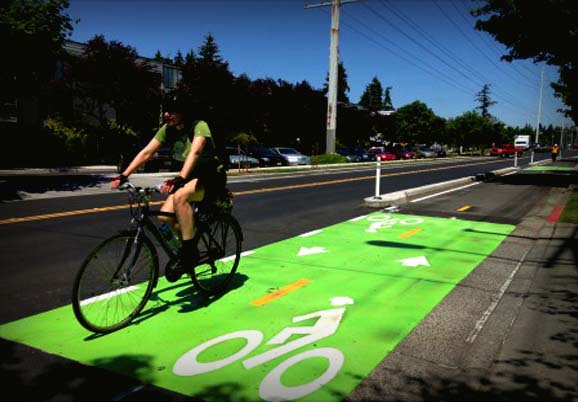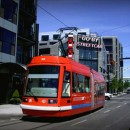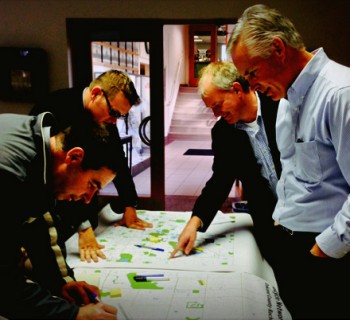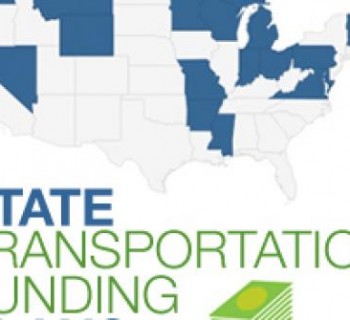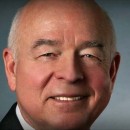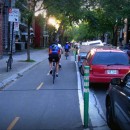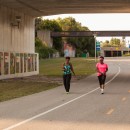Editor's Note: This article was originally posted on Transportation Issues Daily and is reposted with permission.
Many people believe replacing car parking with a bike lane will hurt adjacent businesses because customers arrive by car. That belief is not based on objective data and research. In fact emerging research shows businesses often prosper after a bike lane replaced parking. But more studies and data are needed to inform this debate.
That’s one reason Kyle Rowe, a University of Washington student, chose to look at the impacts of two new bicycle facilities in Seattle. Rowe, writes about his research at the Seattle Transit Blog (“Seattle Case Study: Economic Impacts of Bike Facilities”). His complete report, “Bikenomics,” can be found here (pdf google doc).
“Businesses are not provided sufficient information to understand how people access their storefront,” Rowe writes. “Partly because of the lack of data, business owners in Seattle believe that automobile parking means more customers.” That’s true of communities across the country trying to implement a new bike facility.
Rowe studied a road diet implemented in one neighborhood, and a bike lane in another neighborhood. (He also looked at two control neighborhood commercial districts.) In both instances, neighborhood businesses (and some residents) opposed the projects. Rowe quotes some of the objections in the full report.
Rowe’s conclusion: replacing parking with the bicycle lanes had no negative impact on the business districts. That’s probably the safest conclusion.
He did find, in one instance, a “400% increase in sales index after the parking was removed and the climbing lane was installed, [but] we cannot assume that this economic success was the result of increased bicycle access.”
Studying the economic impacts is challenging and complicated, as you might expect. Rowe acknowledged this, noting that taxable retail sales data is not available at the individual business level, but can be aggregated to a neighborhood business district. There were other challenges with collecting information.
Curiously, Rowe did not interview business owners. Their objective or anecdotal information would be very valuable. One commenter on the STB blog alleges he talked to two business owners, who question the data. Perhaps more anecdotal information will come in response to the story and report, or Rowe or one of his fellow students will do some follow-up research. Rowe responded: “I wasn’t able to interview business owners due to constraints on time… I was working two jobs while trying to finish my degree, so I was pulling overnighters just to finish the project in order to graduate.”
If it turns out there is a flaw in the numbers or research, let’s not kill the messenger. Let’s learn from it and improve the next round of research. It may not be the perfect, but Rowe’s report contributes to the body of research. All in all, I think it advances the ball. Until we have objective data (preferably pre- and post- bike facility and control data) showing otherwise, beliefs about the value of and need for street parking will be difficult to change.

What’s refreshing about the report
Rowe’s story and report is refreshingly free of the all-too-often militant preachiness of some bike-ped advocates. Presenting data that is rigorously researched in objective language is what will help convince skeptics. I like Rowe’s conclusion (bold=our emphasis):
“I believe that the data I found makes a compelling argument for implementing this analysis on future bicycle projects in Seattle. A 400% increase in taxable retail sales data after a bicycle facility is installed, compared to no change at the neighborhood-wide and comparison sites, is certainly something to consider. The disagreements between planners, business owners, and the public regarding the proper use of right-of-way are unfortunate and an impediment to the advancement of the livability and accessibility of this city. However, one cannot point a finger at the businesses for resisting change given that they have little to no information on how street improvements will affect their business. Additionally, planners are not able to tell them anything useful, aside from that they hope and predict that the new facility will be beneficial. Shortening this data gap will not only decrease stakeholder resistance but potentially increase stakeholder support and allow for planners and the retail industry to work together on these projects. We know that bicycle facilities are good for people and for the environment, but to be a comprehensively sustainable city we need to ensure that they are good for the economy.”
We would add that there seems to be value in approaching businesses in a way to make them partners, a method successfully utilized by April Economides. Read our stories about her work.


